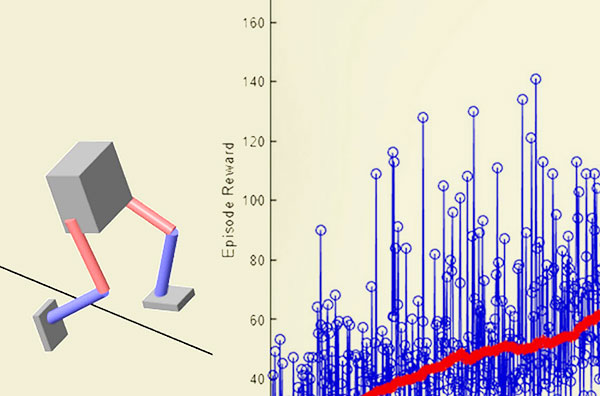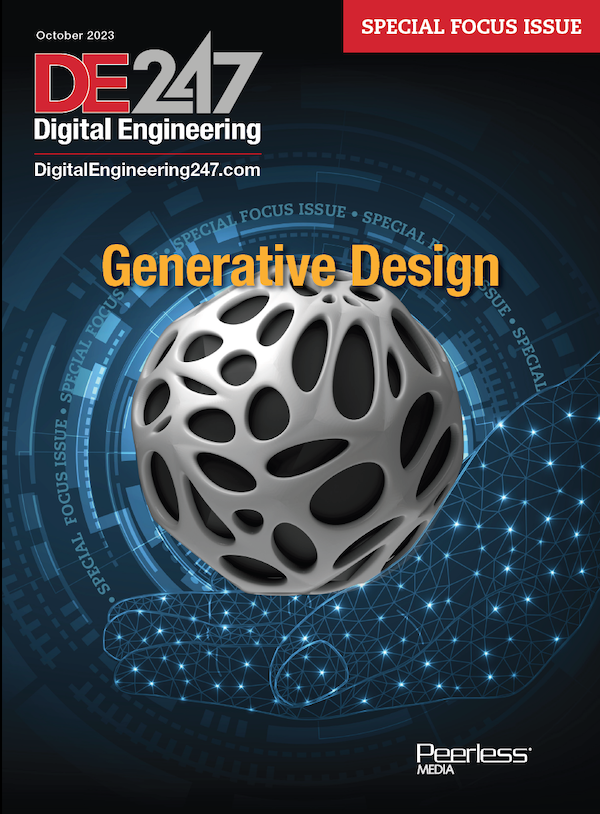Release 2019a of MathWorks MATLAB and Simulink is Now Available
Introduces new products and enhanced capabilities for artificial intelligence, signal processing and static analysis.

Reinforcement Learning Toolbox: Training a biped robot to walk using DDPG Agent. Image © MathWorks.
Latest News
March 26, 2019
MathWorks has introduced Release 2019a of MATLAB and Simulink. The company says the release contains new products and enhancements for artificial intelligence (AI), signal processing and static analysis, along with new capabilities and bug fixes across all product families.
“One of the key challenges in moving AI from hype to production is that organizations are hiring AI ‘experts’ and trying to teach them engineering domain expertise. With R2019a, MathWorks enables engineers to quickly and effectively extend their AI skills, whether it’s to develop controllers and decision-making systems using reinforcement learning, training deep learning models on NVIDIA DGX and cloud platforms, or applying deep learning to 3-D data,” said David Rich, MATLAB marketing director.”
MATLAB Workflow for AI
R2019a introduces Reinforcement Learning Toolbox, further enhancing the MATLAB workflow for AI. The new toolbox is intended to facilitate a type of machine learning that trains an “agent” through repeated trial-and-error interactions with an environment to solve controls and decision-making problems.
The toolbox builds on last fall’s R2018b introduction of Deep Learning Toolbox, which was enhanced with support for NVIDIA GPU Cloud, Amazon Web Services and Microsoft Azure, as well as interoperability through support of the ONNX exchange format. Further support for AI in R2019a includes enhancements to Computer Vision Toolbox, Data Acquisition Toolbox and Image Acquisition Toolbox, according to the company.
Signal Processing
R2019a features several new signal processing and communications products to support wireless and electronics development, including:
- Mixed-Signal Blockset – a Simulink add-on that the company says provides fast model construction, rapid simulation and deep insights into mixed-signal system design models with dedicated analysis and visualization tools.
- SerDes Toolbox – a Simulink add-on that offers the SerDes Designer app for rapid design, analysis and modeling of wired communications transmitters and receivers.
- SoC Blockset – a Simulink add-on that enables simulation and exploration of FPGA, ASIC and SoC architectures, cosimulation of algorithms and hardware platforms, and performance monitoring and bottleneck detection.
Polyspace Static Analysis Advances
R2019a also makes notable advances in the company’s Polyspace static analysis product family. This includes new products that support enterprise-scale use of these products for the design and development of software:
- Polyspace Bug Finder Access and Polyspace Code Prover Access are new Polyspace products that enable collaboration for teams with up to several hundred members. The new products provide a web browser interface to Polyspace static code analysis results and quality metrics stored in a central repository.
- Polyspace Bug Finder Server and Polyspace Code Prover Server are new Polyspace products that allow the static analysis engine to run on a server-class machine with build automation tools. The new products automate and integrate Polyspace into software development processes to automatically assign defects, send notifications, and upload results to Polyspace Access products
R2019a is now available.
Sources: Press materials received from the company and additional information gleaned from the company’s website.
More MathWorks Coverage
Subscribe to our FREE magazine, FREE email newsletters or both!
Latest News
About the Author
DE’s editors contribute news and new product announcements to Digital Engineering.
Press releases may be sent to them via [email protected].






